Artifact overview
Codex Vaticanus is an artifact (Vellum Manuscript) related to the mythological story named 'Biblical Genesis.' The artifact's condition is Excellent and it is currently located at Vatican Apostolic Library in Vatican City, Vatican, catalogued as record number MSS Vat.gr.1209. The language of the text contained is Greek (Greek writing system). Its estimated date is 300—399 CE, which is a range based on available data and scholarship. The mythology associated with this artifact includes the Christian belief system and related deities: God and Yahweh.
About this artifact
Basic details
| Type | Manuscript Vellum material |
| Condition | Excellent |
| Date created | 300—399 CE |
| Language | Greek |
| Writing system | Greek (script) |
| Location | Vatican Library Vatican Apostolic Library · Vatican City, Vatican |
| Museum No. | MSS Vat.gr.1209 |
| Digital access | Museum No. MSS Vat.gr.1209 Fully digitized |
| Myth portion | Genesis 1-3 |
Provenience
| Discovery | Unknown |
Museum record data
Item specifications
| Museum No. | MSS Vat.gr.1209 |
Mythological contents
Associated myths and deities
| Myths | Biblical Genesis |
| Deities | God, Yahweh |
The Codex Vaticanus is one of the oldest manuscripts of the entire Holy Bible and one of the four great unical codices. It was written by three scribes in the 4th century of the common era. It contains a hand-written transcript of the New Testament and Old Testament in the Greek language. It is one of the oldest complete versions of the Biblical Genesis creation myth.
The full manuscript is located in Italy at the Vatican Library.
History
In 1809, the codex was taken from Italy to Paris by Napoleon, only to be returned back to Italy in 1815.
Extended artifact data for MSS Vat.gr.1209
See detailed information about this artifact from the entity that has access to it.
Location description
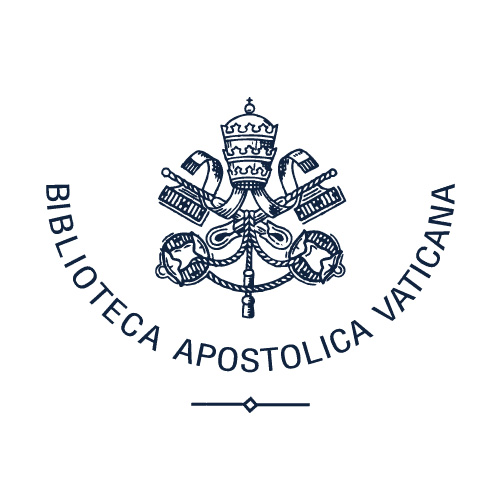 Vatican Library Vatican City, Vaticanexpand_less
Vatican Library Vatican City, Vaticanexpand_lessFull address: Vatican Library, Cortile del Belvedere V VA VA, Vatican City, VA, 00120, Vatican
The Vatican Apostolic Library (Latin: Bibliotheca Apostolica Vaticana; Italian: Biblioteca Apostolica Vaticana), more commonly known as the Vatican Library or informally as the Vat, is the library of the Holy See, located in Vatican City. Formally established in 1475, although it is much older, it is one of the oldest libraries in the world and contains one of the most significant collections of historical texts. It has 75,000 codices from throughout history, as well as 1.1 million printed books, which include some 8,500 incunabula.
Learn more
Record numbers
| Museum No. | MSS Vat.gr.1209 |
| Digitized record | Museum No. MSS Vat.gr.1209 |
| Artifact access | Other |
| Great Uncial Sign | B |
| Gregory-Aland No. | No. 03/B |
| Soden Mark | δ 1 |
Full artifact data
| Dimensions | 27 × 27 cm (10.6 × 10.6 in) |
| Page Count | 759 |
| Columns | 3 |
Record notes
About these data
| Retrieval date | Dec. 12, 2020 |
| Copyright | Vatican Library |
Render
See a rendering of the artifact in images, text, and other form factors. Where available, a translation is included.
Digital scan
OMNIKA Reader
Good news. This original artifact is digitized and available in the OMNIKA Library.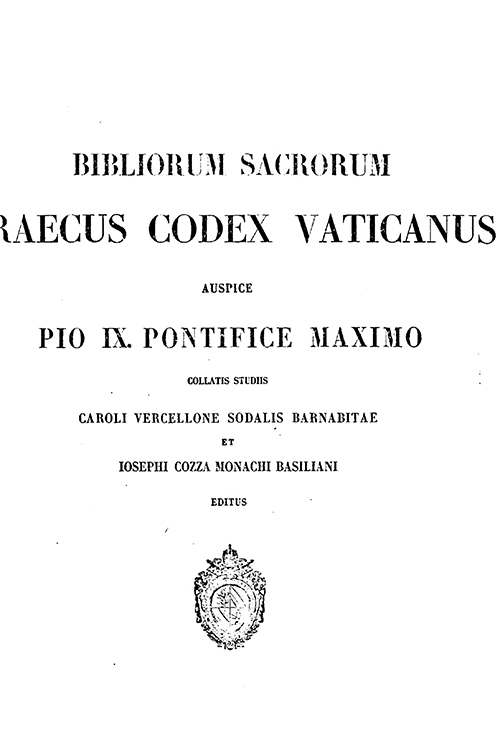
Full Collation (full), Transcript
Imperial Aramaic, English, Modern Hebrew ⟶ English a
| Source a Schaff, "Genesis 1-3 / ASV," 1-3. More info launch |
All texts
| Title |
|
|---|
Mythological contents
This artifact contains mythological contents associated with Christian Religion. The main narrative mentioned may be Biblical Genesis, a Creation myth. The deities depicted or mentioned in the artifact may be: God and Yahweh.
Parent belief system
 Christian Religion · Monotheisticexpand_lessHeads up. This Religion belongs to the Abrahamic collection on the basis of shared myths and deities.
Christian Religion · Monotheisticexpand_lessHeads up. This Religion belongs to the Abrahamic collection on the basis of shared myths and deities.Christianity is one of the world's most widely practiced religions. It is an Abrahamic monotheistic religion based on the life and teachings of the Nazarene figure named Jesus. The important text associated with Christianity is the Holy Bible, which is comprised of the Old Testament and the New Testament. There are over two billion people practicing Christianity around the world, making it the biggest (with Islam behind it).
Learn more
Associated myth
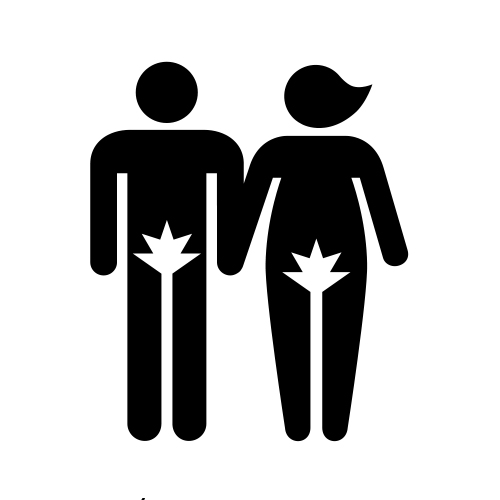 Biblical Genesis Creation mythexpand_less
Biblical Genesis Creation mythexpand_lessNuthsell
God created everything in the course of six days, as follows: (day 1) the heavens and the earth—effectively the entire universe—followed by day and night; (day 2) a dome to separate heaven and earth; (day 3) land, from which trees and plant life is raised; (day 4) sun and moon; (day 5) creatures that dwell in the ocean, and; (day 6) animals and humans (Adam and Eve), modeled in his image. Afterwards, Adam and Eve ate the forbidden fruit from the tree of knowledge of good and evil. Upon eating the apple and gaining awareness, they were kicked out of the Garden of Eden and forced to live out their mortal days on Earth.
Read more
Deities depicted
Artifact condition
The artifact named 'MSS Vat.gr.1209' is appraised as being in Excellent condition based on how much reliance is placed on other resources to make it complete and readable.
| Condition | Excellent | Just OK | Poor |
|---|---|---|---|
 |  | 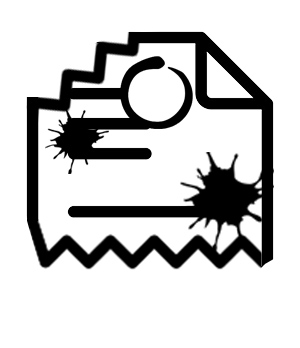 | |
| Completeness | More than 80% | 50 - 80% | Less than 50% |
| Fragmentation | Minor | Moderate | Significant |
| Damage | Minor | Moderate | Significant |
| Legibility | Highly readable | Somewhat readable | Unintelligible |
How did we get this date?
The creation date for the artifact named 'Codex Vaticanus' is a date range because the exact date is unknown. We derived this date from the source(s) listed below:
Notes (see bottom of page for full bibliography)
- "Document ID 20003: Codex Vaticanus," Liste Handschriften. Münster: Institute for New Testament Textual Research, http://ntvmr.uni-muenster.de, accessed March 16, 2009.Visit"Origin Year Early: 300, Origin Year Late: 399"
Artifact access conditions
The codex may be stored in the Great Hall of the Vatican Library, which would indicate it is visible since this part of the museum is available to visitors.
Contact the location
Scholarly research inquiriesGreat uncial codices
This work is one of four great uncial codices. These manuscripts are complete works of the Old Testament and New Testament of the Bible in the Greek language. There are only four in known existence:
| Name | Sign | Soden Mark |
|---|---|---|
| Codex Alexandrinus | A/02 | δ 4 |
| Codex Vaticanus | B/03 | δ 1 |
| Codex Ephraemi Rescriptus | C/04 | δ 3 |
| Codex Sinaiticus | א/01 | δ 2 |
A codex is a handwritten book made with paper, papyrus, vellum, or other materials. The term is almost exclusively used to describe manuscripts.
The term uncial denotes a type of script written solely in capital letters (known as a majuscule script). Greek and Latin scribes used this lettering from the 4th to the 8th centuries CE.
Gregory-Aland catalog system
The Gregory-Aland number is based on a manuscript cataloging system developed by Caspar René Gregory in 1908. The system divides manuscripts into four core groups: papyri, uncials, miniscules, and lectionaries. The papyrus group is based on the material used, uncials/miniscules are based on the script, while the last group is based on the content.
Uncials were given a prefix of the number 0 and a designated letter for the manuscript. For example, the Codex Alexandrinus is recorded as No. 02 and A.
Soden Mark notation
The Soden mark is notation for a complicated manuscript cataloging system developed in the early 1900s by Hermann von Soden. The catalog groups manuscripts by their content and assigns a Greek prefix.
For example, δ represents the complete New Testament, ε represents the Gospels, and α is for the others.
What's a 'joined' artifact?
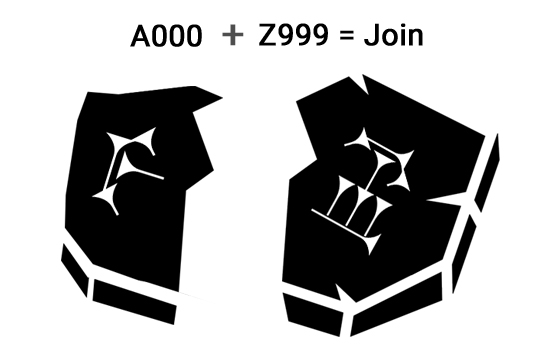
A joined artifact is one that was originally part of the other and was broken or fragmented at some point in time. Joins are common among clay tablets because they may get broken during discovery and transportation. The join is notated with the + sign. For example, if tablets A000 and Z999 are joined, we would express this relationship by grouping them as A000 + Z999 to indicate they are related.
If the fragments are owned, maintained, and cataloged by separate museums then classifying the join relationship is critical for accurate translations.
Cite this page
OMNIKA Foundation Contributors. "Codex Vaticanus." OMNIKA – World Mythology Index, OMNIKA Foundation, 04 Mar. 2019, omnika.org/stable/32. Accessed 13 Dec. 2025.
OMNIKA (2019, March 04). Codex Vaticanus. Retrieved from https://omnika.org/stable/32
OMNIKA Foundation Contributors. "Codex Vaticanus." Las Vegas, NV: OMNIKA Foundation. Created March 04, 2019. Accessed December 13, 2025. https://omnika.org/stable/32.







